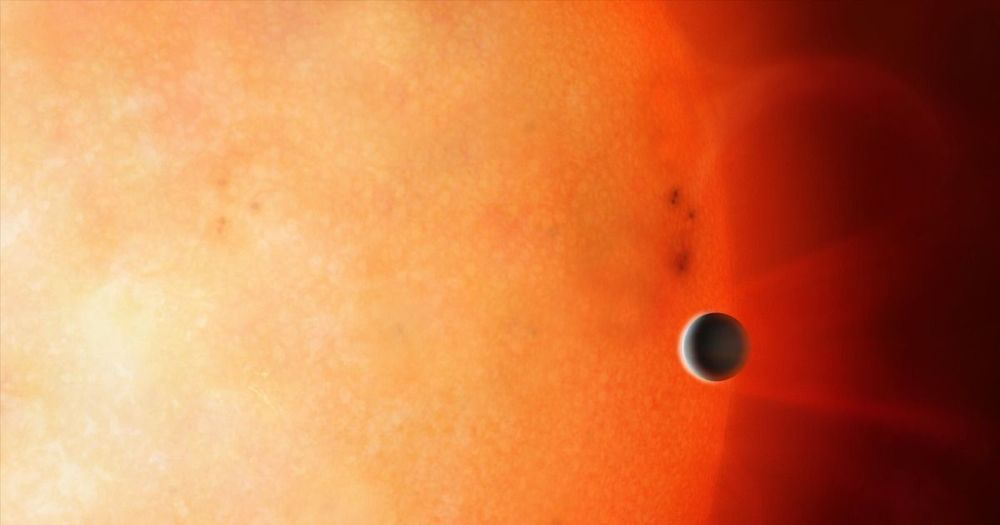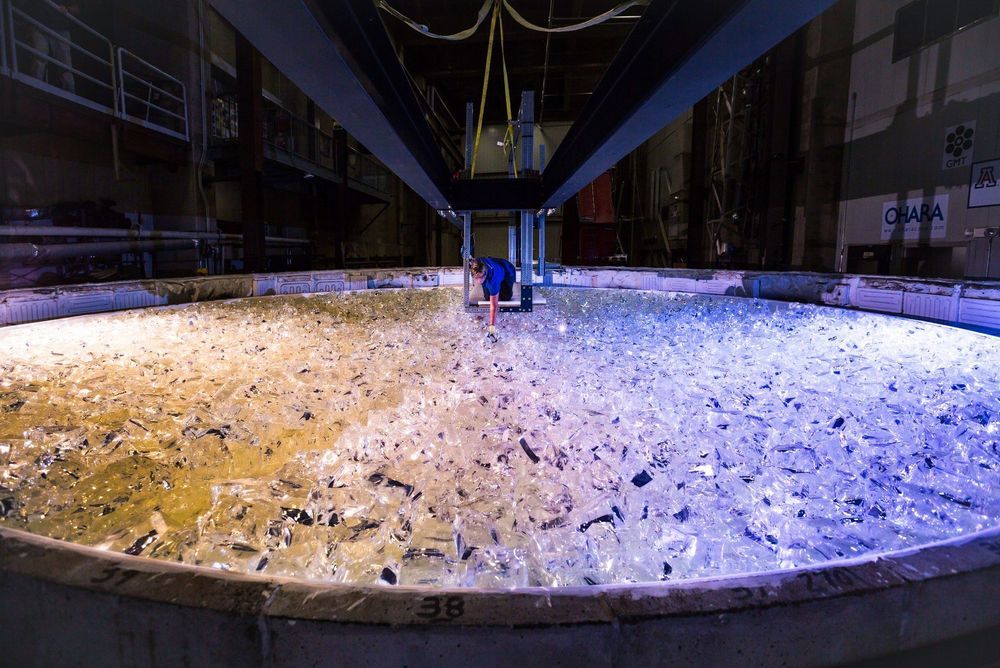Archive for the ‘space’ category: Page 762
May 30, 2019
Found: Exoplanet in the “Neptunian Desert” & Exocomets Around Beta Pictoris
Posted by Genevieve Klien in category: space
Two teams of astronomers have announced the discovery of a Neptune-size planet in an unexpected orbit and three exocomets whizzing around nearby star Beta Pictoris.
May 30, 2019
Is this 3D-printed building the future home for astronauts on Mars?
Posted by Shailesh Prasad in categories: 3D printing, space
NASA has chosen the winner in its contest to design habitation for humans on Mars. It will be built on the red planet using a 3D printer and concrete made from pulverised Martian rocks.
May 30, 2019
Scientists Cook Up a New Way to Make Breathable Oxygen on Mars
Posted by Shailesh Prasad in category: space
May 29, 2019
Astronomers Find Distant “Forbidden Planet” In “Neptunian Desert”
Posted by Michael Lance in category: space
And more Earth-like planets could be found hiding in nearby star systems.
An international team of astronomers says it’s discovered a rogue exoplanet three times the size of Earth — in an orbit that was thought to be impossible, meaning more Earth-like planets could be found hiding in nearby star systems.
No exoplanets with gas atmospheres were previously thought be able to orbit this close to a star — a region known as the “Neptunian Desert” — as the gas would evaporate and leave just a rocky core. Until, that is, this team located NGTS-4b, which they’re calling a “forbidden planet.”
Continue reading “Astronomers Find Distant ‘Forbidden Planet’ In ‘Neptunian Desert’” »
May 28, 2019
Astronomers find ‘Forbidden’ planet in ‘Neptunian Desert’ around its star
Posted by Genevieve Klien in category: space
An exoplanet smaller than Neptune with its own atmosphere has been discovered in the Neptunian Desert around its star by an international collaboration of astronomers, with the University of Warwick taking a leading role.
The rogue planet was identified in the new research, led by Dr Richard West including Professor Peter Wheatley, Dr Daniel Bayliss and Dr James McCormac from the Astronomy and Astrophysics Group at the University of Warwick.
NGTS is situated at the European Southern Observatory’s Paranal Observatory in the heart of the Atacama Desert, Chile. It is a collaboration between UK Universities Warwick, Leicester, Cambridge, and Queen’s University Belfast, together with Observatoire de Genève, DLR Berlin and Universidad de Chile.
Continue reading “Astronomers find ‘Forbidden’ planet in ‘Neptunian Desert’ around its star” »
May 28, 2019
Next-Gen Spacesuit Helmet Has an “Iron Man” Heads Up Display
Posted by Klaus Baldauf in categories: health, space
An artificial intelligence firm says its heads-up display for astronauts could help them better manage complex space missions.
Hypergiant Industries built an “Iron Man”-inspired space helmet called HyperVSR, which can display details like an astronaut’s vital signs or other information about a mission. CEO Ben Lamm told Futurism that it may improve astronaut safety by putting more information at crew members’ fingertips and cutting down on how much they have to maneuver in a spacesuit.
“Space is an unpredictable environment, where challenges can change dramatically over the course of just a few minutes,” Lamm said. “During these situations, it’s paramount that astronaut safety is never in question. We’ve designed our helmet to enable astronauts to quickly gather information about a situation, as well as assess their own health, for enhanced decision-making even during emergencies.”
Continue reading “Next-Gen Spacesuit Helmet Has an ‘Iron Man’ Heads Up Display” »
May 27, 2019
The Astounding Engineering Behind the Giant Magellan Telescope
Posted by Genevieve Klien in categories: education, engineering, habitats, space
It’s easy to miss the mirror forge at the University of Arizona. While sizable, the Richard F. Caris Mirror Laboratory sits in the shadow of the university’s much larger 56,000-seat football stadium. Even its most distinctive feature—an octagonal concrete prominence emblazoned with the school’s logo—looks like an architectural feature for the arena next door. But it’s that tower that houses some of the facility’s most critical equipment.
Inside the lab, a narrow, fluorescent-green staircase spirals up five floors to the tower’s entrance. I’m a few steps from the top when lab manager Stuart Weinberger asks, for the third time, whether I have removed everything from my pockets.
“Glasses, keys, pens. Anything that could fall and damage the mirror,” he says. Weinberger has agreed to escort me to the top of the tower and onto a catwalk some 80 feet above a mirror 27.5 feet in diameter. A mirror that has already taken nearly six years—and $20 million—to make. “Most people in the lab aren’t even allowed up here,” he says. That explains Weinberger’s nervousness about the contents of my pockets (which are really, truly empty), and why he has tethered my camera to my wrist with a short line of paracord.
Continue reading “The Astounding Engineering Behind the Giant Magellan Telescope” »
May 27, 2019
This New State of Matter Is a Liquid and a Solid at the Same Time!
Posted by Klaus Baldauf in categories: particle physics, quantum physics, robotics/AI, space

Scientist have just discovered that, at an atomic level, these elements have both liquid and solid states, giving context to what may be hidden in the cores of celestial bodies.
A New State of Water Reveals a Hidden Ocean in Earth’s Mantle — https://youtu.be/pgm4z8vJVVk
Continue reading “This New State of Matter Is a Liquid and a Solid at the Same Time!” »
May 27, 2019
For The First Time, DNA Has Been Edited With CRISPR in Space
Posted by Genevieve Klien in categories: biotech/medical, genetics, space
Humans may not be able to burp properly in space, but we can now edit a genome. For the first time, astronauts aboard the International Space Station (ISS) have used CRISPR-Cas9 to edit the DNA of brewer’s yeast.
The goal wasn’t to create super space yeast. The astronauts were studying how DNA repair mechanisms work in space, so they snipped through strands of the fungus’s genetic code in a number of places to mimic radiation damage.
“The damage actually happens on the space station and the analysis also happens in space,” said Emily Gleason of miniPCR Bio, the company that designed the DNA lab aboard the ISS. “We want to understand if DNA repair methods are different in space than on Earth.”
Continue reading “For The First Time, DNA Has Been Edited With CRISPR in Space” »

















